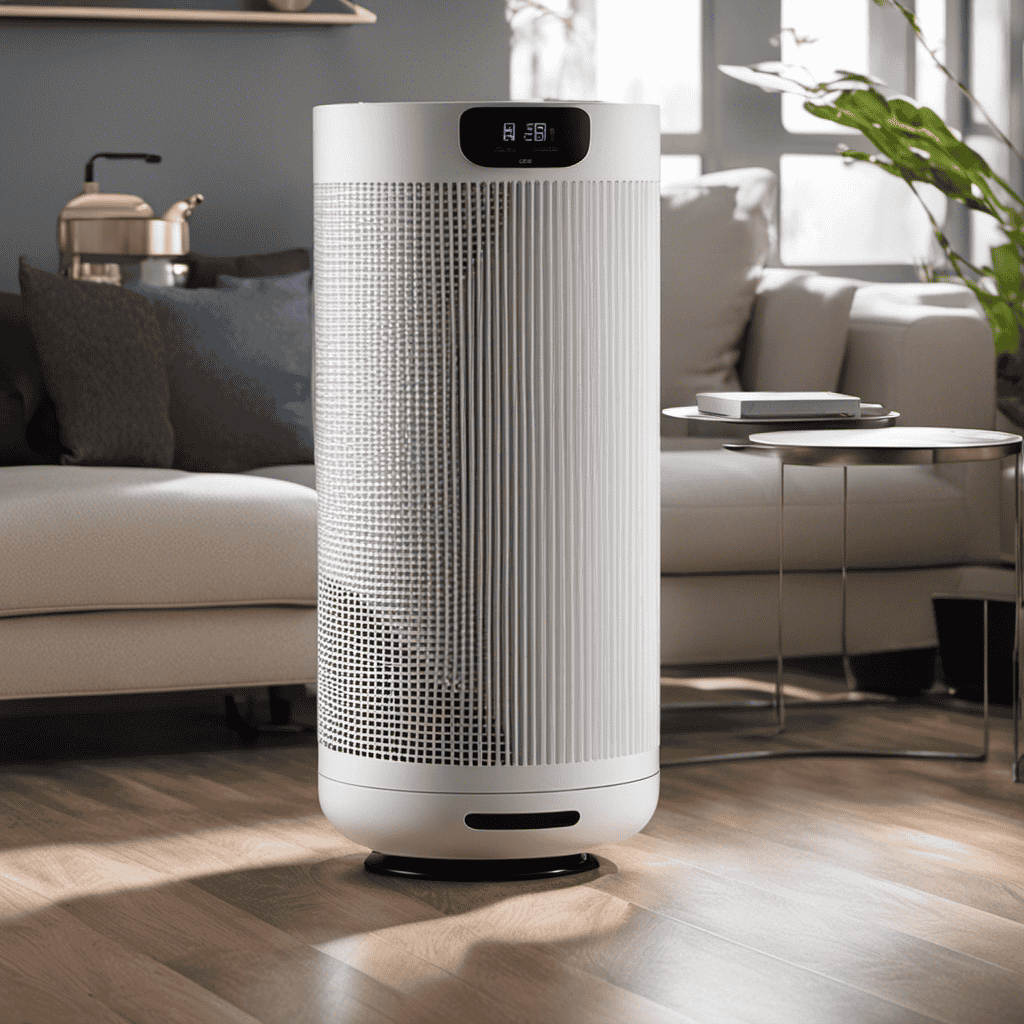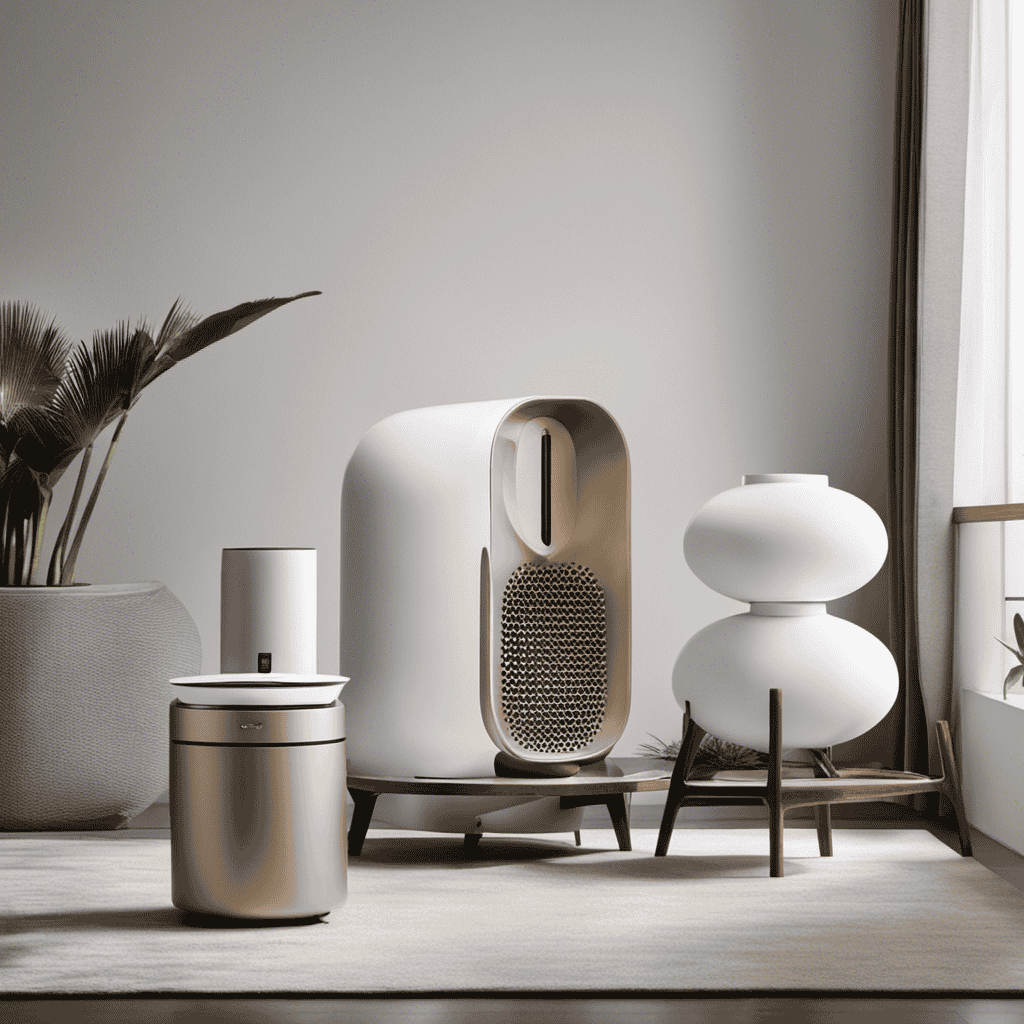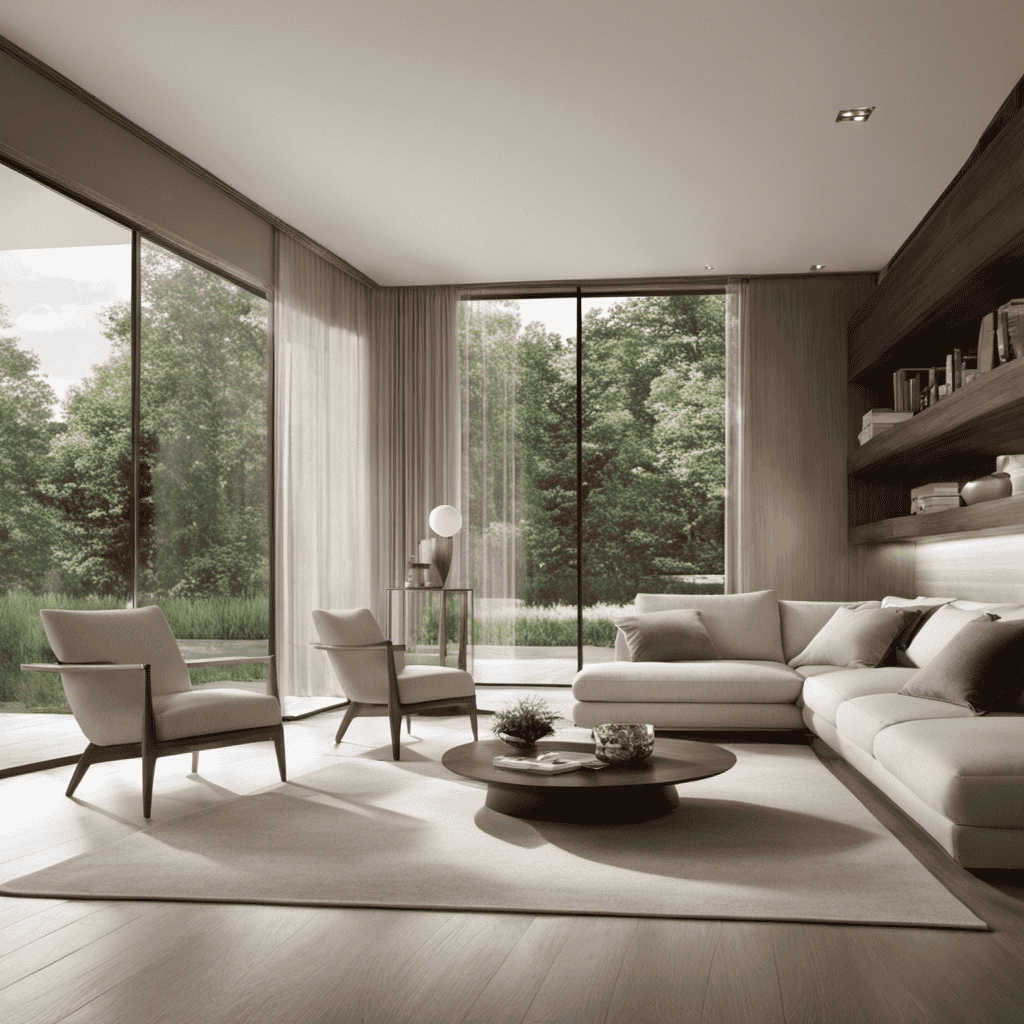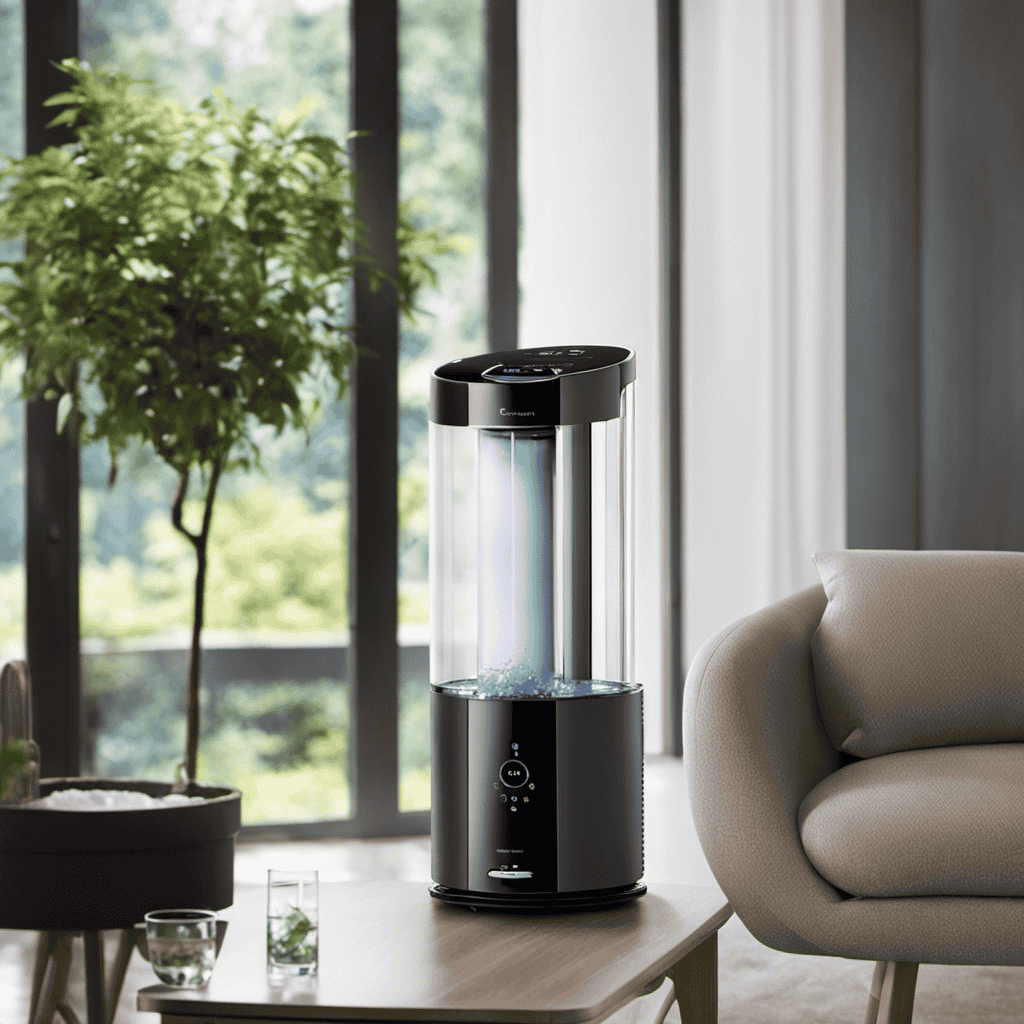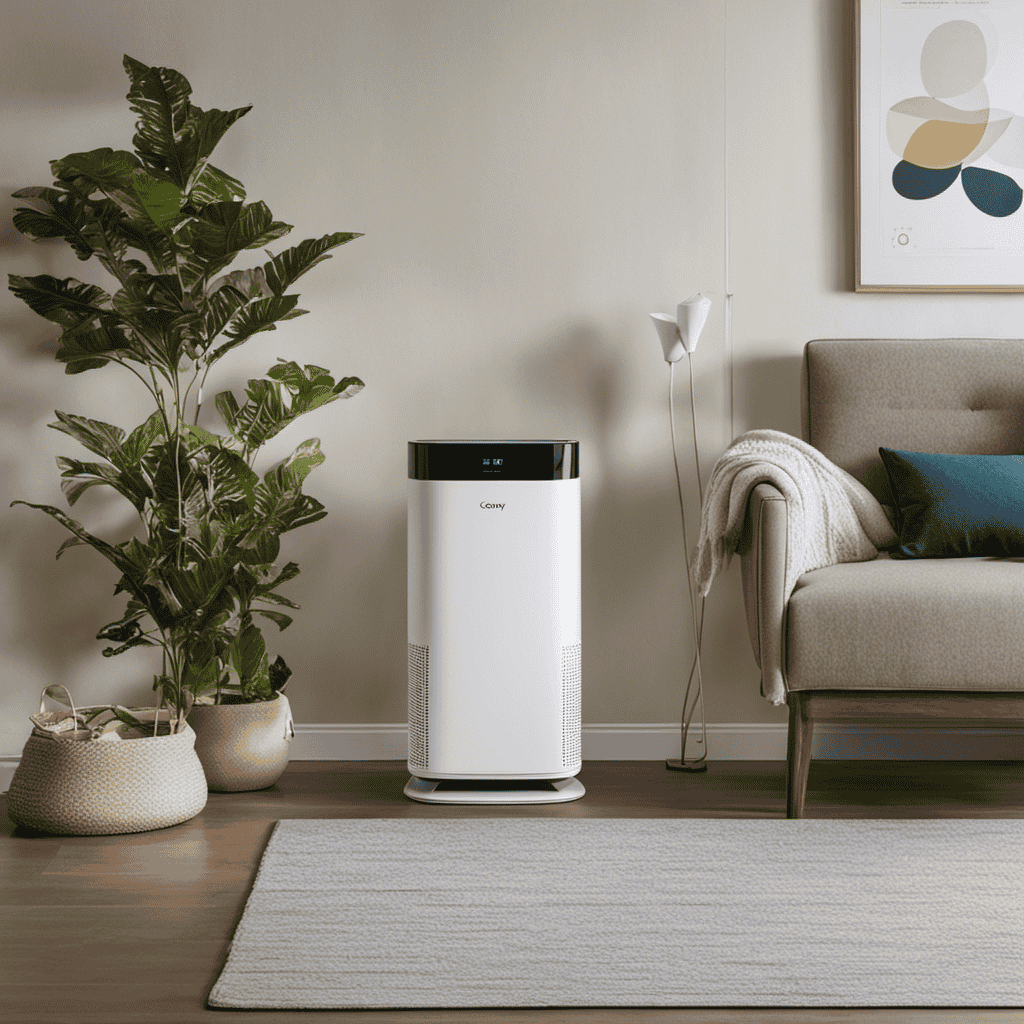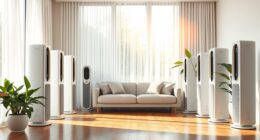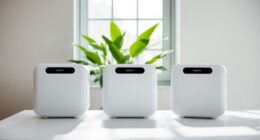I have always been passionate about promoting clean and healthy air, which is why I constantly search for the most effective ways to purify the air in my home. Today, I am thrilled to present to you my detailed guide on selecting a quality air purifier.
By considering the different types of air purifiers available, the important factors to look for, and understanding the filtration systems, you’ll be equipped to make an informed decision that will greatly improve the air quality in your living space.
Let’s dive in!
Key Takeaways
- Consider the size of your space and the specific needs of the individuals using the space when choosing an air purifier.
- Do thorough research on air purifier brands to ensure you choose one that effectively removes common air pollutants and meets your specific needs.
- Understand the different types of air purifiers available, such as portable, whole house, and hybrid, and choose the one that best suits your requirements.
- Pay attention to the filters and filtration systems used in air purifiers, such as HEPA filters and activated carbon filters, as they play a crucial role in capturing and removing contaminants from the air.
Types of Air Purifiers to Consider
There are three main types of air purifiers that you should consider when choosing the right one for your home.
The first type is portable air purifiers, which are smaller units that can be moved around to different rooms. These are great for targeting specific areas and are more affordable than other options.
The second type is whole house air purifiers, which are larger units that are installed in your HVAC system. These purifiers clean the air throughout your entire home and are more effective at removing pollutants.
Lastly, there are hybrid air purifiers, which combine both portable and whole house features. They offer the flexibility of portable units with the power of whole house systems.
When choosing an air purifier, consider the size of your space, your specific needs, and your budget to find the best option for you.
Factors to Consider When Choosing an Air Purifier
When selecting an air purifier, you should take into account several factors. Firstly, consider the size of the room where the purifier will be used. A larger room may require a more powerful purifier to effectively clean the air. Additionally, think about the specific needs of the individuals using the space. People with allergies or asthma may benefit from purifiers that target allergens or remove particles as small as 0.3 microns. Next, consider the noise level of the purifier. Some models can be quite loud, which may be a concern if you plan to use it in a bedroom or office. Finally, do your research on air purifier brands. Look for reputable companies that have positive reviews and a track record of producing quality products. By considering these factors, you can choose an air purifier that effectively removes common air pollutants and meets your specific needs.
| Factors to Consider | Air Purifier Brands |
|---|---|
| Room size | 1. Honeywell |
| Specific needs | 2. Blueair |
| Noise level | 3. Coway |
| Brand reputation | 4. Levoit |
Understanding Air Purifier Filters and Filtration Systems
To understand how filters and filtration systems work in an air purifier, you should consider the different types available and their effectiveness in removing particles and pollutants from the air.
Air purifiers use filters to capture and trap contaminants, such as dust, pollen, pet dander, and smoke particles. There are different types of filters, including HEPA filters, activated carbon filters, and ionizers.
HEPA filters are highly effective at removing tiny particles, while activated carbon filters specialize in removing odors and chemicals. Ionizers release negative ions to attract and remove pollutants from the air.
The advantages of using an air purifier include improved indoor air quality, reduced allergies and asthma symptoms, and a cleaner environment for everyone in the household.
Now, let’s explore the important features to look for in an air purifier.
Important Features to Look for in an Air Purifier
One important feature to consider in an air purifier is its size and coverage area. The size of the air purifier will determine how effectively it can clean the air in a given space. It is crucial to choose an air purifier that is suitable for the size of the room or area you want to purify.
Additionally, the coverage area of an air purifier indicates the maximum space it can effectively clean. This information is usually provided by the manufacturer and can help you determine whether the air purifier is suitable for your needs.
When looking for an air purifier, it’s also important to consider the maintenance required. Regular cleaning and filter replacement are necessary to ensure optimal performance and to remove common air pollutants such as dust, pollen, pet dander, and smoke. By properly maintaining your air purifier, you can prolong its lifespan and ensure clean, fresh air in your home or office.
Now, let’s delve into how to determine the right size and coverage for your air purifier.
How to Determine the Right Size and Coverage for Your Air Purifier
If you’re unsure about the right size and coverage for your air purifier, take into account the dimensions of the room you want to purify and the manufacturer’s recommendations. Choosing the right size and coverage for your air purifier can greatly impact its effectiveness and efficiency in purifying the air.
Here are two discussion ideas related to this subtopic:
-
Importance of considering room size when selecting an air purifier:
- A smaller room may require a compact air purifier, while a larger room may need a more powerful unit.
- Proper sizing ensures that the air purifier can effectively filter the air in the entire room, removing pollutants and allergens.
-
How to calculate the appropriate air purifier coverage based on room dimensions:
- Measure the length and width of the room to calculate the square footage.
- Check the manufacturer’s recommendations to determine the appropriate coverage for the air purifier.
- Consider factors such as ceiling height and the number of occupants in the room when calculating coverage.
Frequently Asked Questions
Can an Air Purifier Completely Eliminate All Types of Indoor Air Pollutants?
Yes, an air purifier can effectively reduce indoor air pollutants, but it may not completely eliminate all types. It has limitations and may struggle with certain pollutants like gases or chemicals.
How Often Should the Filters in an Air Purifier Be Replaced?
Filters in an air purifier should be replaced regularly to ensure optimal performance. The replacement frequency depends on the specific model and usage, but generally it is recommended to replace filters every 6-12 months. Regular maintenance is key for efficient air purification.
Are Air Purifiers Safe to Use Around Children and Pets?
Yes, air purifiers are generally safe to use around children and pets. However, it is important to choose a good air purifier brand that meets safety standards and follow proper air purifier maintenance guidelines.
Can an Air Purifier Help With Reducing Allergies and Asthma Symptoms?
Using an air purifier has greatly helped with my allergies and asthma symptoms. It effectively removes pet dander and even cigarette smoke, providing a healthier indoor environment. I highly recommend it.
Are There Any Health Risks Associated With Using an Air Purifier for Extended Periods of Time?
There can be potential side effects and long-term effects associated with using an air purifier for extended periods of time. It is important to consider these health risks before deciding to use one.
Conclusion
In conclusion, choosing a good air purifier is essential for maintaining clean and healthy indoor air.
By considering the types of air purifiers available, factors such as room size and air quality, and understanding the different filtration systems, you can make an informed decision.
For example, Sarah, a mother of two, decided to invest in a high-efficiency particulate air (HEPA) filter air purifier to reduce her children’s allergies. Since using the air purifier, her children have experienced fewer allergy symptoms and are breathing easier.
Remember, selecting the right air purifier can greatly improve your indoor air quality and overall well-being.
